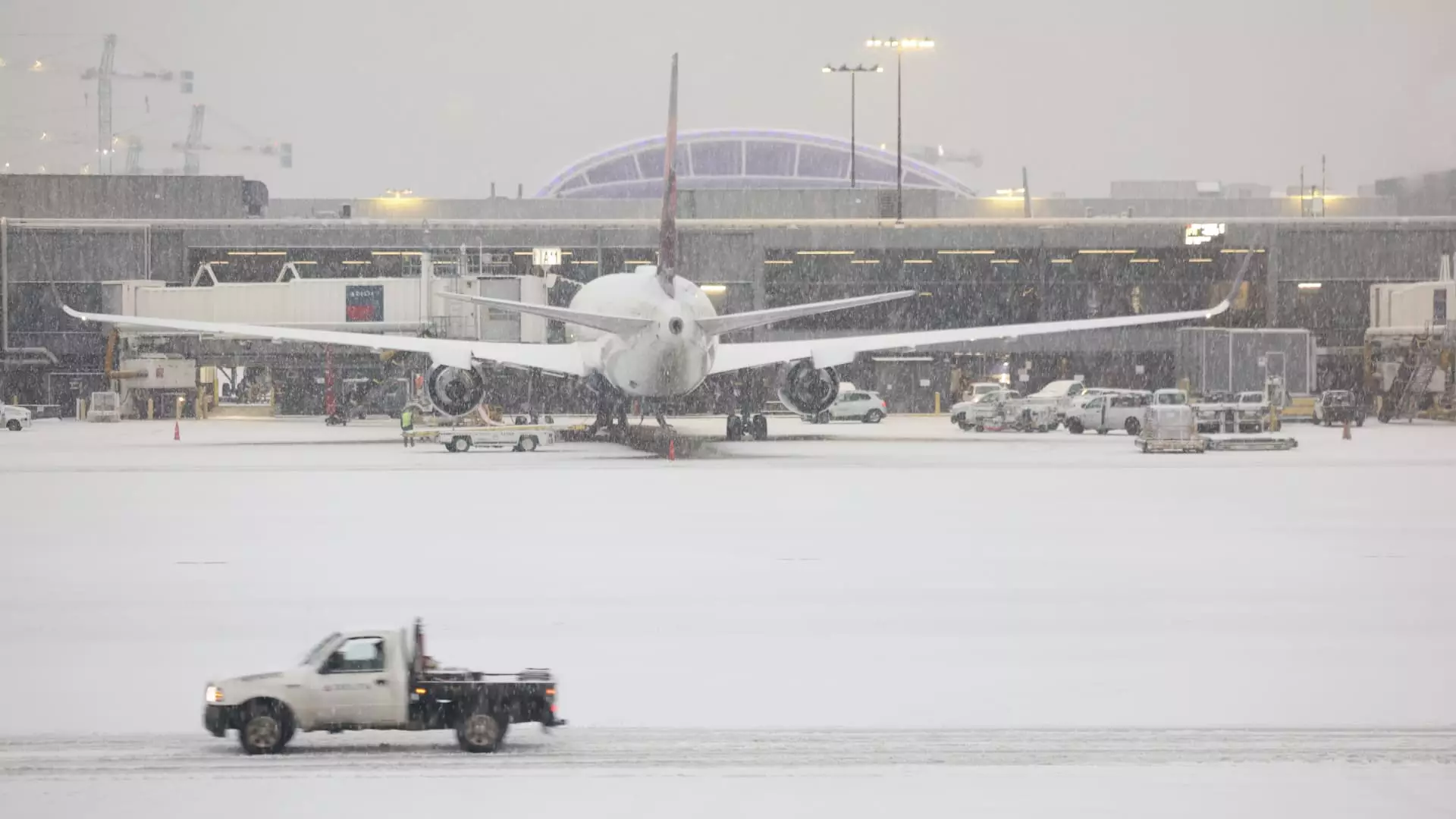In an unsettling turn of events for travelers, a significant winter storm wreaked havoc on air travel throughout the Southern United States on Friday, leading to over 2,000 flight cancellations and an additional 2,000 delays. The situation escalated sharply as snow and adverse weather conditions impacted several key airports, forcing airlines to make difficult decisions to prioritize passenger safety. The most pronounced disruption took place at Hartsfield-Jackson Atlanta International Airport, hailed as the world’s busiest airport and a principal hub for the airline industry.
The situation at Atlanta escalated when a Delta Air Lines Boeing 757-300 encountered an engine issue during its takeoff sequence. The aircraft, destined for Minneapolis-St. Paul International Airport, was promptly halted, leading to an emergency evacuation of 201 passengers and seven crew members via emergency slides. Delta Air Lines issued a statement asserting the importance of safety, highlighting that their flight crew adhered strictly to established protocols during the incident. Such emergencies exemplify the challenges airlines face in ensuring passenger safety amidst escalating operational pressures and severe weather conditions.
The repercussions of the winter storm reverberated throughout the major airline hubs in the region. Atlanta’s operational difficulties accounted for roughly 40% of flight cancellations reported for the day. A groundstop policy was instituted to manage the overflow of flights to Atlanta, effectively pausing incoming flights at their departure airports. Similarly, two of American Airlines’ key hubs—Dallas/Fort Worth International and Charlotte Douglas International—were hit hard, canceling more than 1,000 flights due to treacherous weather conditions including heavy snowfall.
Amid the chaos, airlines took measures to alleviate the plight of affected customers. Delta, Southwest, American Airlines, and other carriers promptly waived change fees and fare differences to accommodate those impacted by the cancellations and delays. Such customer-oriented policies are crucial in restoring traveler confidence and demonstrating airlines’ commitment to their passengers during unprecedented challenges.
As airlines navigate the aftermath of this severe weather event, the focus remains on restoring normalcy in operations. The travel disruptions serve as a reminder of the vulnerabilities that the aviation industry faces in the face of harsh weather conditions. Moving forward, these incidents may prompt airlines to revisit and enhance their contingency planning and operational strategies to better manage future disruptions. Ultimately, ensuring passenger safety and satisfaction should remain a central tenet as the airline industry continues to adapt to increasingly erratic weather patterns.

